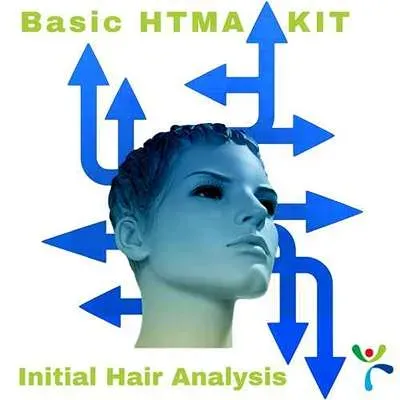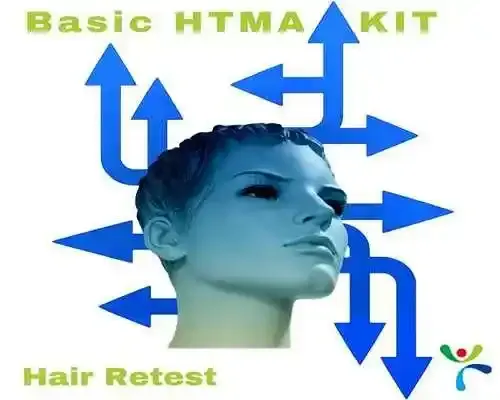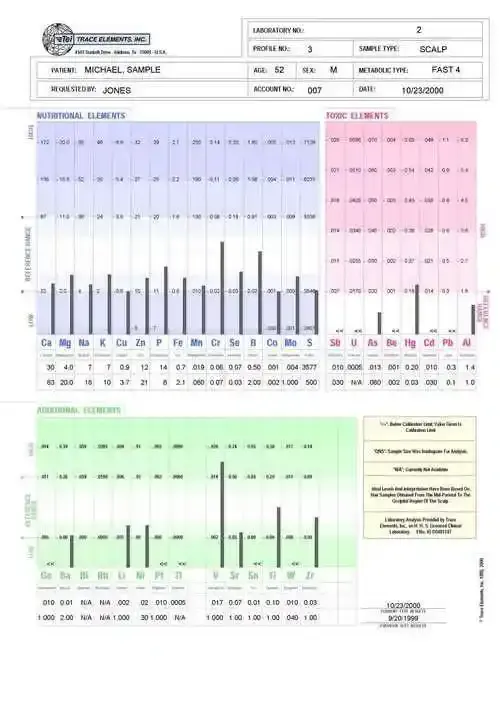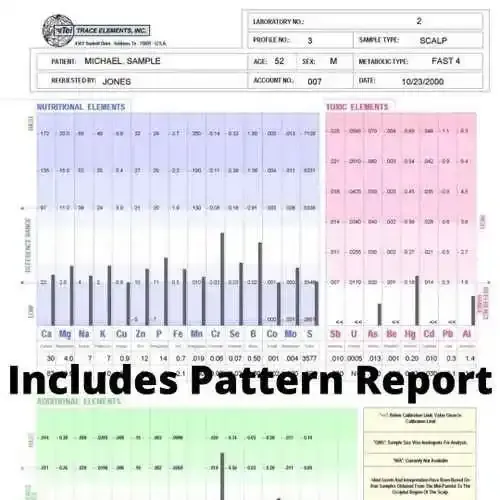Collecting a Hair Sample
Everything You Need to Know About HTMA Hair Analysis and How to Get Started
In recent years, health-conscious individuals and practitioners alike have turned their attention toward innovative diagnostic tools that offer insights into the body’s mineral balance and toxic metal exposure. One such method gaining popularity is Hair Tissue Mineral Analysis (HTMA). This non-invasive, straightforward test provides a wealth of information about your metabolic health, mineral deficiencies, excesses, and toxic metal burdens—all from a simple hair sample.
Whether you're a health practitioner aiming to tailor nutritional programs or an individual seeking a better understanding of your body's mineral status, understanding how HTMA works, how to prepare for the test, and what to expect can empower you to make informed decisions about your health journey.
What Is Hair Tissue Mineral Analysis (HTMA)?
HTMA is a scientific analysis that measures the levels of minerals and toxic metals present in hair tissue. Unlike blood tests, which often reflect recent mineral status, hair analysis provides a longer-term view of mineral accumulation over weeks or months. It serves as an indirect marker of mineral status because minerals are incorporated into hair as it grows, making it an ideal tissue for assessing chronic exposure and imbalances.
Why use hair?
Hair is a unique tissue because it is easy to collect, non-invasive, and stable over time. It accumulates minerals and metals from the bloodstream, offering insights into your body's mineral reserves and toxic metal burdens without the need for painful or invasive procedures like blood draws or urine tests.
What does HTMA reveal?
This analysis can uncover deficiencies in key minerals such as magnesium, calcium, zinc, and selenium, as well as excesses of toxic metals like mercury, lead, cadmium, and aluminum. These imbalances can influence numerous health conditions, including hormonal imbalances, fatigue, neurological issues, immune dysfunction, and more.
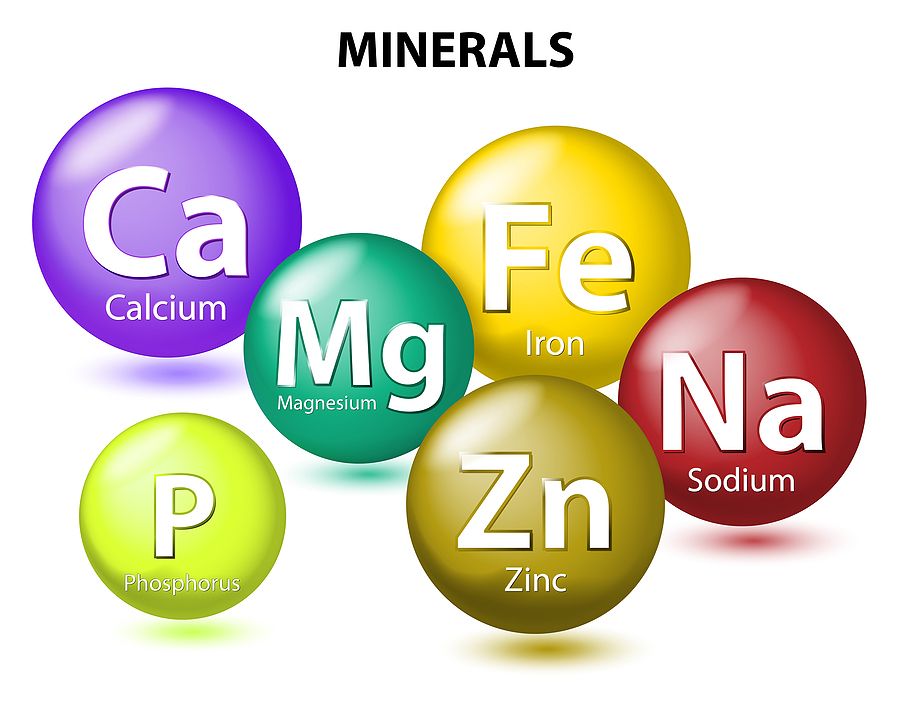
The scientific basis
Laboratories like Analytical Research Labs (ARL) and Trace Elements, Inc. utilize sophisticated analytical techniques such as inductively coupled plasma mass spectrometry (ICP-MS) to precisely measure mineral and metal levels in hair samples. Practitioners like Eileen Durfee and others interpret these reports, integrating them into personalized nutritional balancing programs designed to restore optimal mineral balance and detoxify the body.
How Does HTMA Differ from Other Tests?
Compared to blood or urine tests, HTMA provides several unique advantages:
- Long-term perspective: Hair reflects mineral status over weeks to months, unlike blood which indicates current or recent levels.
- Non-invasive and easy: Collecting hair is painless and simple, making it accessible for all age groups.
- Cost-effective: Generally less expensive than comprehensive blood panels.
- Detects chronic exposure: Hair can reveal long-term accumulation of toxic metals that may not be apparent in blood or urine testing.
However, it’s important to recognize that HTMA is a complementary tool, not a replacement for other diagnostic tests. A holistic approach, combining different assessments, often yields the best results.
Getting Your HTMA Test Kit from Wellness Shopping Online
If you're interested in exploring HTMA further, the process of obtaining a test kit is straightforward and designed for maximum convenience.
Ordering the kit
When you order your HTMA test through Wellness Shopping Online, you'll receive all the necessary materials to collect your sample properly. The process begins with selecting the test, which can be done easily via their website.
What’s included?
For U.S. customers, the kit typically includes:
- A Hair Sample Weight Scale: Ensures you submit the correct amount of hair for accurate analysis.
- Collection instructions: Step-by-step guide to help you collect a proper sample.
- Sample envelope: To package your hair securely for shipment.
International clients
Those outside the U.S. will receive lab forms via email, along with detailed instructions. International samples are sent directly to the laboratory from your location, making the process seamless regardless of where you live.
Shipping
Once your sample is collected, you simply mail it back to the designated lab. Most labs provide prepaid shipping labels or instructions to ensure your sample reaches them safely and promptly.
Turnaround time
After the lab receives your sample, analysis typically takes about 2-3 weeks. You will then receive a comprehensive report detailing your mineral levels and toxic metal exposure, along with tailored recommendations if you consult with a practitioner.
How to Prepare and Cut a Hair Sample for HTMA Testing
Proper preparation and collection of a hair sample are crucial for accurate Hair Tissue Mineral Analysis (HTMA) results. Follow the steps below to ensure your sample is clean, uncontaminated, and ready for testing.

Step 1: Preparing for the Hair Sample Collection
- Wash your hair thoroughly
Before collecting your sample, wash your hair with a simple, sulfate-free shampoo. Avoid conditioners, styling gels, sprays, or any hair products that contain minerals or chemicals, as these can contaminate the sample.
- Timing is key
Collect your hair sample between 4 to 24 hours after washing. This window allows natural oils to return to the hair, which helps prevent contamination from external products or environmental pollutants.
- Avoid water softeners
If your home uses a water softener, it's recommended to wash your hair 2-3 times with spring water or unsoftened water before collecting the sample. Water softeners often add minerals like sodium or potassium, which could alter the mineral content in your hair.
- Environmental considerations
Try to avoid exposure to pollutants or chemicals on the day of collection. For example, if you've been in a highly polluted environment or have handled chemicals, wait until these exposures are minimal before collecting hair.
Step 2: Cutting the Hair Sample
- Use the right tools
Choose clean, sharp stainless-steel scissors or thinning shears. Do not use electric razors, trimmers, or scissors made of other metals, as these can introduce contamination.
- Select the location
The best place to cut hair is from the back of the head, near the nape of the neck. This area tends to be less exposed to styling products and environmental pollutants. Make sure to cut as close to the scalp as possible to capture the most recent mineral deposition.
- Cutting technique
Trim a small, clean section of hair, taking about 1-1.5 inches in length (approximately 2.5-4 cm). If your hair is shorter than this, collect several small samples from different spots on your scalp to make up the required amount.
Step 3: How Much Hair to Collect
- Quantity required
Approximately 125 milligrams of hair is needed—roughly the size of a teaspoon or enough to cover a 20-cent coin. This amount ensures sufficient material for precise analysis.
- Short hair considerations
If you have very short hair, gather small samples from multiple areas on your scalp to reach the desired weight. Be sure to combine these samples into one collection envelope.
Step 4: Packaging the Sample
- Use paper envelopes
Place your hair sample into a clean, dry paper envelope. Do not use plastic bags, aluminum foil, or any container that could trap moisture or cause contamination. Paper allows the sample to breathe, reducing the risk of mold or mildew.
- Label clearly
Write your full name, date of birth, collection date, and the date of sampling on the envelope. Accurate labeling ensures your sample can be correctly identified and matched to your report.
- Storage and shipping
Keep the sample in a cool, dry place until shipment. Follow any additional instructions provided by the lab or your practitioner.
Additional Tips for Accurate Hair Sample Collection
- Avoid chemical treatments: Refrain from coloring, bleaching, or chemically relaxing your hair for at least 3 months before collecting the sample.
- Limit environmental exposure: Avoid exposure to pollutants, smoke, or chemicals on collection day.
- Consistency: Collect samples at the same time of day for consistency, especially if you plan multiple tests over time.
- Hygiene: Wash your hands thoroughly before handling the sample to prevent contamination.
Interpreting Your HTMA Results
Once your sample has been analyzed, you'll receive a detailed report. This report typically includes:
- Mineral levels (e.g., calcium, magnesium, zinc, copper, selenium)
- Toxic metal levels (e.g., mercury, lead, aluminum)
- Ratios and patterns indicating mineral imbalances or deficiencies
- Recommendations for nutritional supplements, dietary adjustments, or detoxification protocols
It's advisable to review your results with a qualified practitioner who can interpret the data in the context of your overall health and guide you toward appropriate interventions.
Final Thoughts: Taking the First Step Toward Better Health
Hair Tissue Mineral Analysis is an empowering tool that offers insights beyond conventional testing. By understanding your mineral status and toxic metal exposure, you can address underlying imbalances that may be contributing to health issues. Proper sample collection is vital to obtaining accurate, meaningful results.
With the straightforward process of ordering a kit, careful sample collection, and professional interpretation, HTMA can become a cornerstone of your personalized health plan. Remember, maintaining optimal mineral balance and minimizing toxic metal burden can have profound effects on your energy, immunity, mental clarity, and overall well-being.
